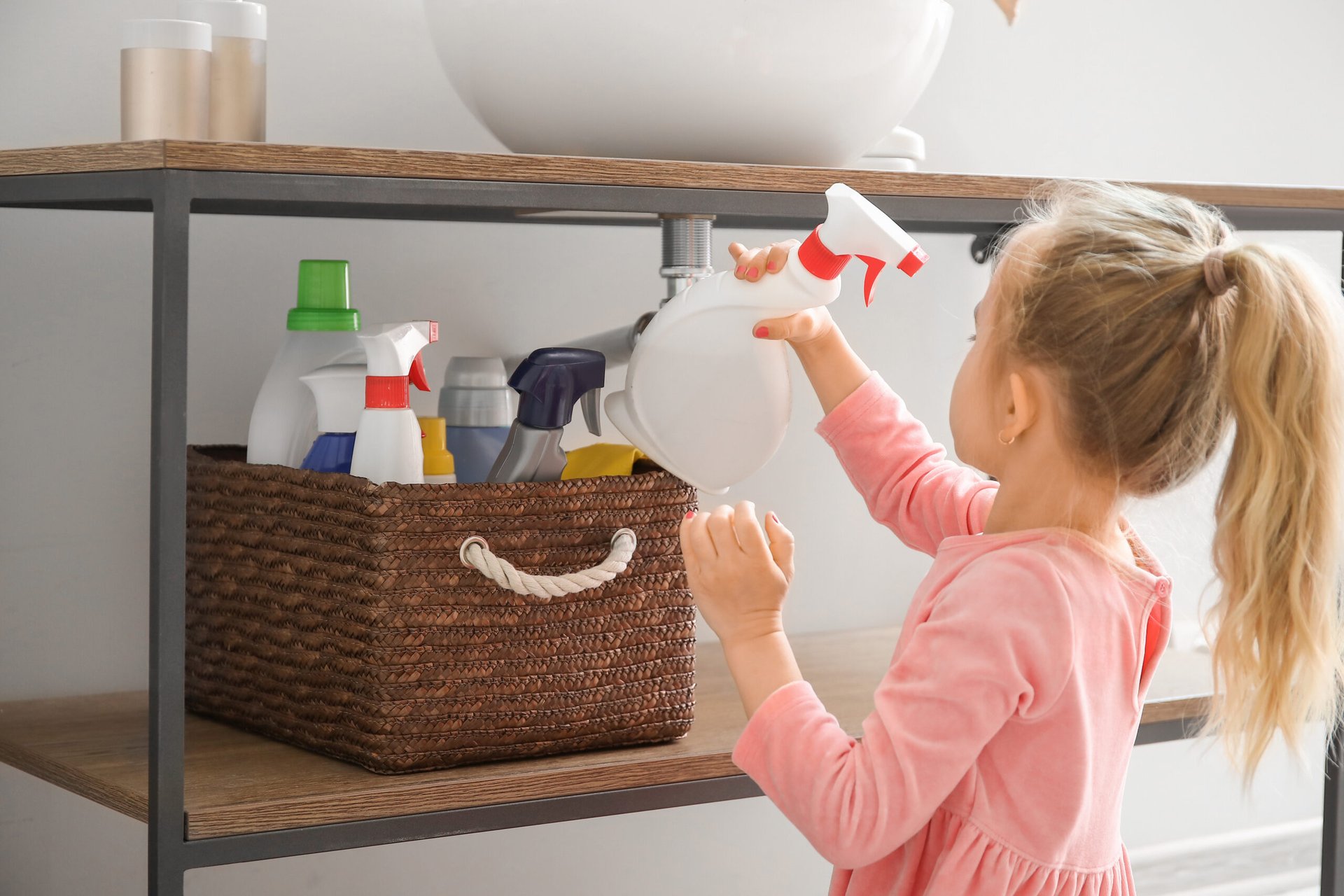
Is the warming weather triggering your spring cleaning impulses? Or maybe sheltering in place from COVID-19 has got you scrubbing. Cleaning feels like a healthy impulse, but take care you don’t get hurt.
That’s easier than you’d imagine, as cleaning products often contain chemicals — including bleach, ammonia, acids and hydrogen peroxide — that should never be used together.
Below, we’ve outlined some dangerous combinations of common household chemicals.
A word of caution
Before using any cleaning products, always read their labels. The Missouri Poison Center also advises leaving each product in its own container to help avoid mistakes and confusion.
In case you have a chemical accident, act quickly: Call the American Association of Poison Control Centers hotline at 800-222-1222 to reach your local poison control center. Then, look for a toll-free telephone help number on a product’s label and check a product’s website for information.
Never mix chlorine bleach and ammonia
You probably have a gallon jug of chlorine bleach in your laundry area. It makes laundry whiter — and can be used to sanitize a home against the spread of the coronavirus, as we detail in “5 Household Cleaners That Can Kill the Coronavirus.”
Ammonia is another familiar household cleaner. You may have it on hand for cleaning windows, for instance.
But don’t combine bleach and ammonia — or cleaning products that contain bleach and ammonia. That combination creates dangerous chloramine gas.
Exposure to this gas can cause chest pain, coughing, shortness of breath, nausea and irritation to your eyes, nose or throat. It can even cause pneumonia and fluid in the lungs.
The active ingredient in chlorine bleach is sodium hypochlorite, which is found in many disinfectants as well as household bleach, according to the Washington State Department of Health. So, if a cleaning product says “sodium hypochlorite” or “bleach” on its label, do not mix it with ammonia.
Ammonia may be found in glass and window cleaners as well as paint (both interior and exterior). If you are uncertain whether such a product contains ammonia, be safe and don’t use it with bleach.
Never mix chlorine bleach and acids
When chlorine bleach combines with an acid, it can create another dangerous substance, chlorine gas. The Washington State Department of Health warns:
“Chlorine gas exposure, even at low levels, almost always irritates the mucous membranes (eyes, throat and nose), and causes coughing and breathing problems, burning and watery eyes, and a runny nose. Higher levels of exposure can cause chest pain, more severe breathing difficulties, vomiting, pneumonia, and fluid in the lungs. Very high levels can cause death.”
In late 2019, a restaurant manager in Burlington, Massachusetts, died after a cleaning product containing high-strength sodium hypochlorite (the active ingredient in bleach) was used on a floor where a cleaning product containing phosphoric acid and nitric acid had been spilled.
The Utah Department of Health says acids may be present in:
- Vinegar
- Drain cleaners
- Toilet bowl cleaners
- Window and glass cleaners
- Automatic dishwasher detergents and rinses
- Products for removing lime, calcium and rust
- Concrete and brick cleaning products
If you’re unsure whether a product contains an acid, don’t use it with bleach or with products that list bleach or sodium hypochlorite on the label.
Never mix vinegar and hydrogen peroxide
Vinegar is acidic — its key ingredient is acetic acid. Vinegar is also an amazingly versatile and environmentally friendly product. You can use it in your home to replace expensive chemical cleaners and pesticides like those we identify in “27 Money-Saving Ways to Use Vinegar in Every Room of Your Home.”
Hydrogen peroxide, also an acid, is used as a disinfectant and antiseptic as well as a bleaching agent.
It’s not safe to combine vinegar or products containing vinegar with hydrogen peroxide or products that contain hydrogen peroxide.
The Missouri Poison Center warns:
“When vinegar of any kind is mixed in the same container with hydrogen peroxide, periacetic acid is formed. Periacetic acid is used as a sanitizer, but in high concentrations it is corrosive and can cause irritation of the skin, eyes and respiratory system.”
Never mix vinegar and Castile soap
Castile soap, available in liquid or bar form, is named after olive oil-based soaps originating in Castile, Spain. Other soaps may use animal fat, but Castile soap contains only vegetable oils.
Castile soap is used as a household cleaning agent for its simple ingredients. It is particularly good at cutting through grease.
Vinegar, too, is often preferred by households looking for simple, healthy cleaners.
But don’t use them together, cautions Lisa Bronner, whose family members run Dr. Bronner’s Magic Soaps. She is a granddaughter of the company founder, Dr. Emanuel Bronner.
It’s not dangerous to combine acidic (lower-pH) cleaning agents like vinegar or lemon juice with a base or alkaline (higher-pH) cleaner like Castile soap. But the acid and base, when combined, react to neutralize each other’s useful properties. Bronner explains:
“The vinegar ‘unsaponifies’ the soap, by which I mean that the vinegar takes the soap and reduces it back out to its original oils. So you end up with an oily, curdled, whitish mess.”
It’s safe and preferable, Bronner says, to use Castile soap and vinegar in sequence: Clean with Castile soap and follow that with a vinegar rinse to remove any soap film.





Add a Comment
Our Policy: We welcome relevant and respectful comments in order to foster healthy and informative discussions. All other comments may be removed. Comments with links are automatically held for moderation.